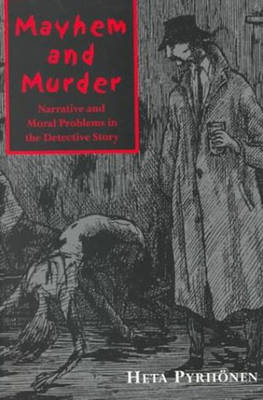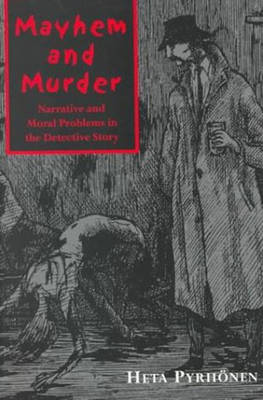
- Afhalen na 1 uur in een winkel met voorraad
- Gratis thuislevering in België vanaf € 30
- Ruim aanbod met 7 miljoen producten
- Afhalen na 1 uur in een winkel met voorraad
- Gratis thuislevering in België vanaf € 30
- Ruim aanbod met 7 miljoen producten
Omschrijving
The detective story centres on unravelling two questions: whodunit? and who is guilty? In Murder and Mayhem, Heta Pyrhönen examines how these questions organize and pattern the genre's formal and thematic structures. Beginning with a semiotic reading of the detective as both code-breaker and sign-reader, Pyrhönen's theoretical analysis then situates the reader and the detective in parallel worlds - both use the detective genre's typical motifs in solving the crime, but do not employ the same narrative interpretations to do so. This difference is examined with the help of the familiar game analogy: while the fictional world of the criminal functions as the detective's antagonist, readers see both the detective and the criminal as the fictional masks behind which their own adversary, the author, is hiding. The reading of detective stories as complex interpretative games reveals how the genre engages the reader's formal imagination and moral judgment.
Discussing a range of detective stories from works by Conan Doyle and Chesterton to Borges and Rendell, and drawing on the work of major critics - including Dennis Porter, Umberto Eco, John T. Irwin, and Slavoj Žižek - Pyrhönen offers a unique, sophisticated, and engagingly lucid analysis of a complex genre.
Specificaties
Betrokkenen
- Auteur(s):
- Uitgeverij:
Inhoud
- Aantal bladzijden:
- 352
- Taal:
- Engels
- Reeks:
Eigenschappen
- Productcode (EAN):
- 9780802082671
- Verschijningsdatum:
- 27/11/1999
- Uitvoering:
- Paperback
- Formaat:
- Trade paperback (VS)
- Afmetingen:
- 154 mm x 229 mm
- Gewicht:
- 517 g

Alleen bij Standaard Boekhandel
Beoordelingen
We publiceren alleen reviews die voldoen aan de voorwaarden voor reviews. Bekijk onze voorwaarden voor reviews.












